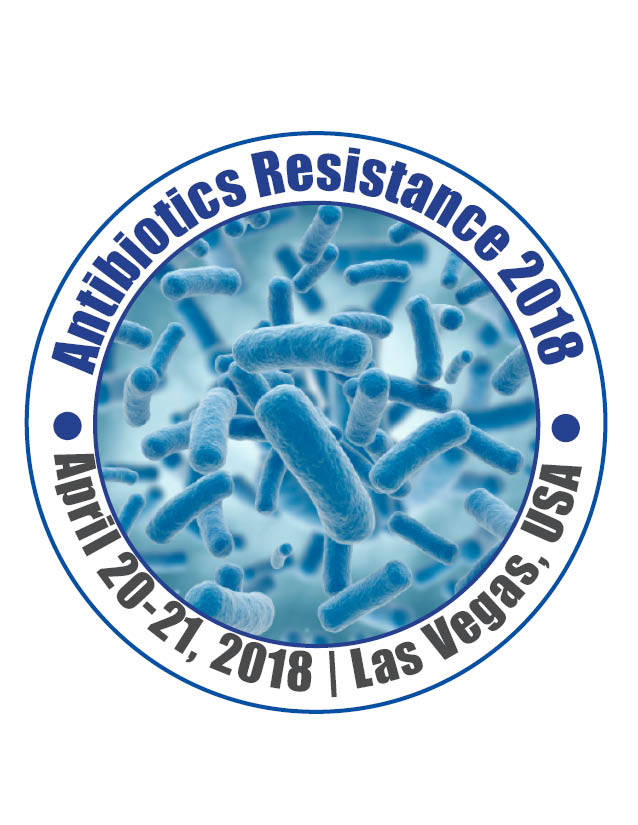Poster 3-Andressa Liberal Santos
Federal University of Goias, Brazil
Title: Beta-lactamics antimicrobial resistance from Enterobacteriaceae
Biography
Biography: Poster 3-Andressa Liberal Santos
Abstract
Antimicrobial resistance is a worldwide problem. Resistance is generated by the acquisition of genes that encode methods of evasion to the mechanisms of action of antimicrobials. Strains with resistance to multiple classes of antibiotics emerged among the major Gram-negative species, including the family Enterobacteriaceae. Among the antibiotics, frequently used are beta-lactams and resistance to this class has also increased. Th e objective of this work was identifi ed Enterobacteriaceae resistance by phenotypic method and to standardize a molecular diagnostic method for 15 beta-lactam resistance genes. The Kirby and Bauer methods were used to verify the phenotypic resistance to beta-lactams and the molecular tracing of resistance genes was done using the real-time polymerase chain reaction (qPCR) method using the SYBR Green System. Among the results, the study also showed the phenotyic resistance of beta-lactams following the criteria established by the Institute of Clinical and Laboratory Standards, in which the samples had a total of 118 resistances, being 5.08% in K. pneumoniae, 0.84%
in P. mirabilis, 3.38% in C. freundii, 19.49% in S. enterica, 23.72% in E. aerogenes, 16.94% in E. agglomerans, 1.69% in R terrigenes, 5.93% in P. stuartii, 10.16% in M. morganii and 7.62% in H. alvei. Aft er, a bibliographic research was carried out on resistance genes, antimicrobial and Enterobacteriaceae like Klebsiella pneumoniae, Proteus mirabilis, Citrobacter freundii,
Enterobacter cloacae, Enterobacter aerogenes, Enterobacter agglomerans, Serratia marcescens, Salmonella enterica, Raoultella terrigenes, Providencia stuartii, Morganella morganii and Hafnia alvei. Subsequently. Th e work presents bibliographic data on the relationship between beta-lactams and resistance genes studied, as well as the relation of these and Enterobacteriaceae, all of clinical origin in Brazil. Finally, molecular resistance profi les were screened on the bacteria studied, there is a
correlation of phenotype data with the genes studied. A molecular diagnostic method for 15 beta-lactams resistance genes in Enterobacteriaceae was standardized via qPCR.

